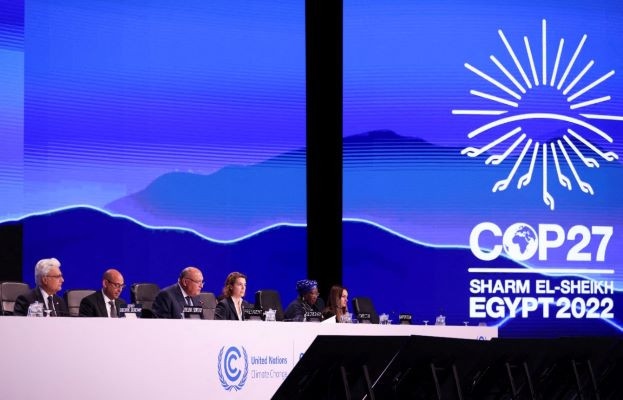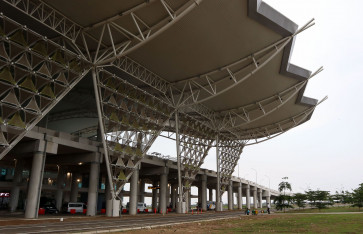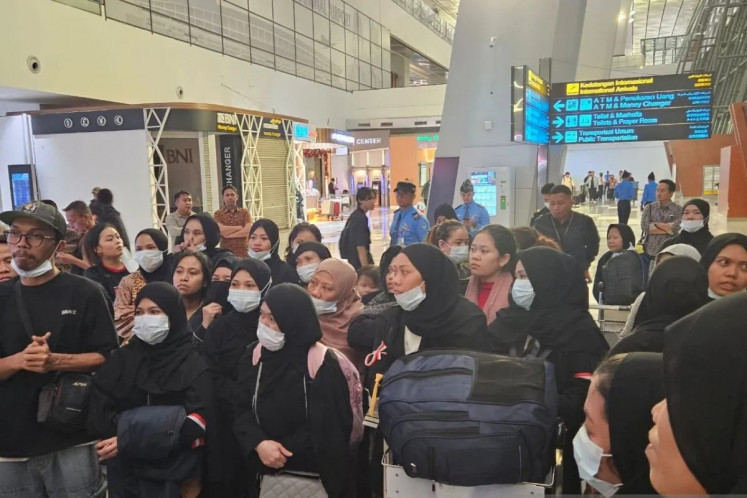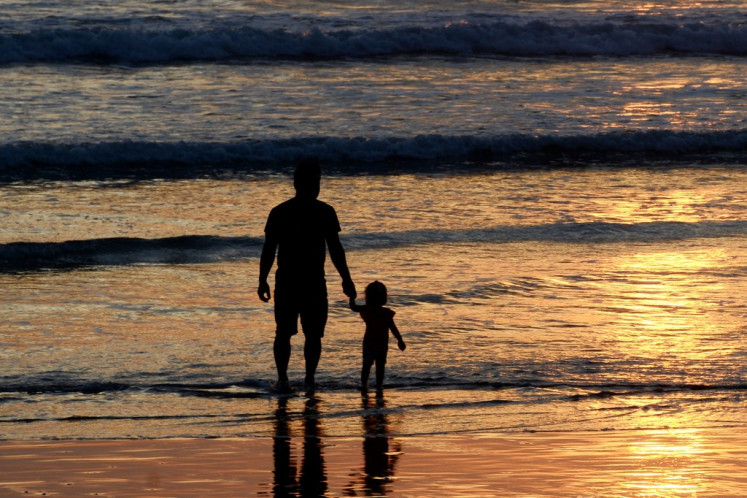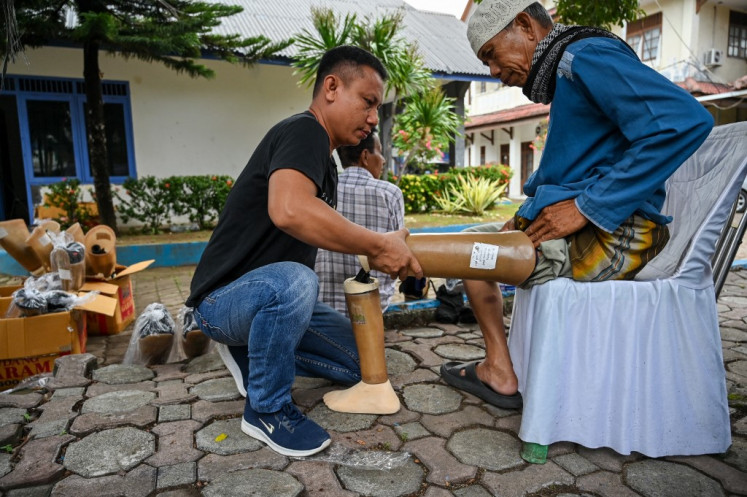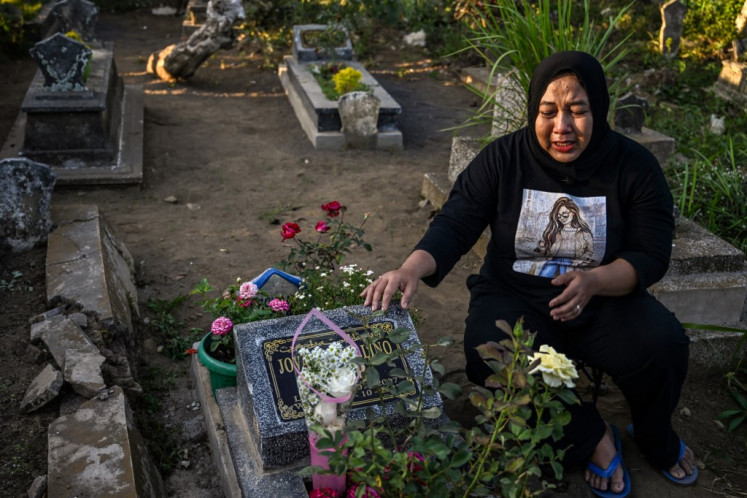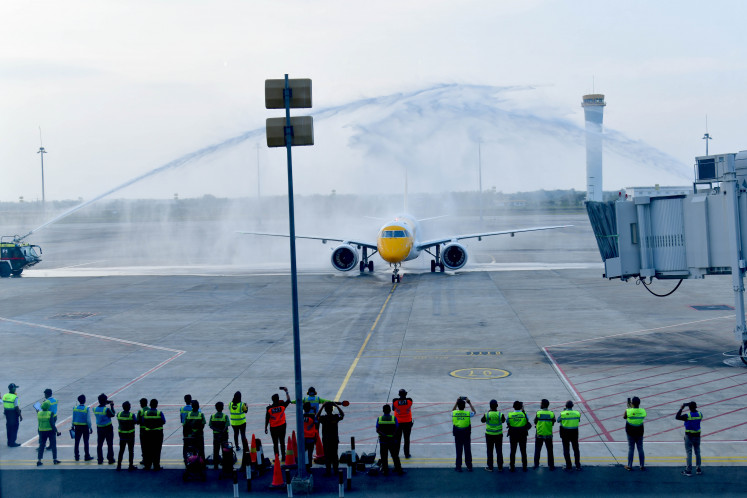Popular Reads
Top Results
Can't find what you're looking for?
View all search resultsPopular Reads
Top Results
Can't find what you're looking for?
View all search resultsDoers, not delayers: Cities forging ahead with their climate actions
While cities are increasingly seen as the driver of climate actions, city governments still face challenges in accessing finance to address climate change.
Change text size
Gift Premium Articles
to Anyone
S
cientists and thought leaders have reminded us that climate change is the defining issue of our time and is quickly becoming a human rights crisis. Research shows that 85 percent of the world's population has already experienced climate-induced extreme weather events.
About 55 percent of the world's population lives in urban areas, and this trend will continue in the next decades with a 90 percent increase of urbanization in Asia and Africa. Cities, particularly those in Asia, are some of the most vulnerable to the impacts of climate change.
Coastal cities like Jakarta, Bangkok, Chittagong, and Ho Chi Minh City are threatened by rising sea levels that will render parts of these cities unlivable and put additional pressure on basic services and local infrastructure already strained by the COVID-19 pandemic. Other megacities like Delhi are experiencing rising heat waves with record-breaking temperatures reaching up to 49.2 degrees Celsius in May 2022.
Climate change and rapid urbanization may also increase the risk of future displacement in Asia. A report released by Asian Development Bank (ADB) and the Internal Displacement Monitoring Centre (IDMC) highlighted that 225 million internal displacements were recorded in Asia Pacific between 2010-2021, with nearly two-thirds of the total recorded in East and Southeast Asia.
With increasingly severe climate events such as storms, typhoons, drought, rainfalls, and heat waves, cities and those living in cities face multiple consequences.
Around 60 percent of Indonesians live in coastal cities like Jakarta – the fastest sinking city in the world. Sea-level rise combined with increasingly erratic rainfalls will result in massive infrastructure damage to the country's capital city.
Bangkok is sinking by up to 2 centimeters each year. The World Bank analyzed that land loss from sea level rise will affect the capital city's economic activities and public infrastructures.
The impact of climate change in cities is more apparent for those living in areas lacking infrastructure and adaptive capacity, and individuals may be more vulnerable due to age, gender, disability, economic situation, caste, and other factors. Disasters and climate shocks will exacerbate pre-existing inequalities and exclusion, rendering these groups even more vulnerable and exposed to future disasters and climate change-related risks.
Integrating a human rights-based approach into local climate adaptation plans is paramount to empowering public participation, resulting in better public services, more inclusive societies, and more sustainable and resilient cities.
While the world waited patiently (and watched in despair) for the nations negotiating at Conference of the Parties (COP) 27 in Sharm El Sheikh, Egypt last November, cities are forging ahead with their ambitious, innovative, and rights-based climate actions. Mayors, planners, youth, human rights activists, academics, and civil society organizations from around the globe gathered in Gwangju, South Korea, to attend the annual World Human Rights Cities Forum, where they reaffirmed their commitment to integrating human rights into local climate actions.
One example that realized this commitment came from the City of Iloilo in the Philippines, which developed its local climate adaptation plans through participatory processes involving different sectors of society, from youth, persons with disabilities and the LGBTIQ+ community to universities, civil society, and businesses.
Another example is the northern city of Baguio which also developed its Local Adaptation Plan through stakeholder meetings/consultations. The mayor also devised a strategy to mainstream local adaptation plans to various city development and investment plans.
Many more cities across Asia have initiated rights-based climate actions. For example, Dhaka issued a "Town Watching Manual", which supports residents in understanding and identifying climate risks and vulnerability in their area and helps them plan and take actions to minimize the negative impacts of climate change.
As part of Seoul's effort to slash its transport emissions, the city government provides subsidies for electric vehicles of up to 20 percent, with additional support available for vulnerable people and low-income households to ensure all residents have access to clean transport.
Representatives from Asia and the Pacific youths presented their action points on youth participation in national and local climate adaptation plans. Building on the last year's recommendations, the youth action points focus on how youth can participate more substantively in the planning, decision-making, monitoring and evaluation of national and local climate adaptation plans. The message of nothing about us without us was made loud and clear throughout the discussion.
Cities are the locus of climate struggle and solutions – many have acknowledged this. The latest Intergovernmental Panel on Climate Change (IPCC) report highlighted the critical role of cities and local governments in tackling the impacts of climate change. However, cities face multiple barriers, as highlighted by the newly-launched COP27's Sustainable Urban Resilience for the Next Generation (SURGe) initiative. Limited access to financing is among the identified barriers.
Why is finance such a major concern? The World Bank has stated that $4.5-5.4 trillion is needed annually for urban infrastructure globally, with a portion of it related to making the infrastructure low-emission and resilient to climate change impacts. However, in 2017-2018, only $384 billion was invested.
While cities are increasingly seen as the driver of climate actions, city governments still face challenges in accessing finance to address climate change. For example, national laws may restrict local governments from borrowing funds and or limit local government’s taxation power, among others.
During COP27, city leaders, many from the Global South, called for increasing climate financing to support local climate actions. Mayor Yvonne Aki-Sawyer of Freetown, who is also vice-chair of C40 Cities, emphasized that although the impacts of climate change in cities are very real and present, the financial supports are not at the level where they should be.
For her part, Aki-Sawyer has explored various financial institutions and mechanisms to support her city's climate action. However, even when funding commitment has been secured, she emphasized the gap between commitment and actual disbursement for implementation remains. To amplify her powerful message: "you cannot talk about urgency and fail to deliver with urgency".
There is a gap in the capacity of government actors to develop and implement climate policies underpinned by gender and human rights. Whilst there are numerous resources on how to mainstream gender in climate change projects, opportunities to train technical people at national and local levels are limited.
Cities play an important role in global climate action as often cities move faster than nations. However, without a coherent global plan on what cities can and should do and the corresponding financing, cities cannot meet their full potential as sources of innovation and solutions.
The lack of accessible climate finance for cities to spearhead local mitigation and adaptation efforts, especially in the Global South, risks exacerbating the adverse effects of climate change, such as climate-induced migration, that will impact the global north.
***
The writer is program officer at the Raoul Wallenberg Institute in Jakarta.

